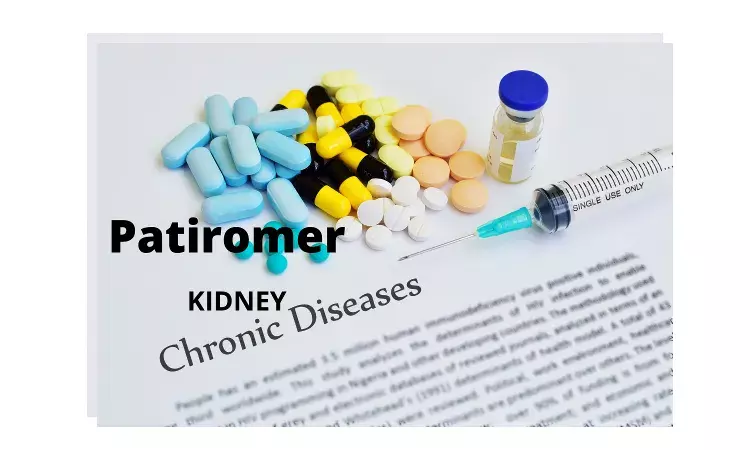- Home
- Medical news & Guidelines
- Anesthesiology
- Cardiology and CTVS
- Critical Care
- Dentistry
- Dermatology
- Diabetes and Endocrinology
- ENT
- Gastroenterology
- Medicine
- Nephrology
- Neurology
- Obstretics-Gynaecology
- Oncology
- Ophthalmology
- Orthopaedics
- Pediatrics-Neonatology
- Psychiatry
- Pulmonology
- Radiology
- Surgery
- Urology
- Laboratory Medicine
- Diet
- Nursing
- Paramedical
- Physiotherapy
- Health news
- Fact Check
- Bone Health Fact Check
- Brain Health Fact Check
- Cancer Related Fact Check
- Child Care Fact Check
- Dental and oral health fact check
- Diabetes and metabolic health fact check
- Diet and Nutrition Fact Check
- Eye and ENT Care Fact Check
- Fitness fact check
- Gut health fact check
- Heart health fact check
- Kidney health fact check
- Medical education fact check
- Men's health fact check
- Respiratory fact check
- Skin and hair care fact check
- Vaccine and Immunization fact check
- Women's health fact check
- AYUSH
- State News
- Andaman and Nicobar Islands
- Andhra Pradesh
- Arunachal Pradesh
- Assam
- Bihar
- Chandigarh
- Chattisgarh
- Dadra and Nagar Haveli
- Daman and Diu
- Delhi
- Goa
- Gujarat
- Haryana
- Himachal Pradesh
- Jammu & Kashmir
- Jharkhand
- Karnataka
- Kerala
- Ladakh
- Lakshadweep
- Madhya Pradesh
- Maharashtra
- Manipur
- Meghalaya
- Mizoram
- Nagaland
- Odisha
- Puducherry
- Punjab
- Rajasthan
- Sikkim
- Tamil Nadu
- Telangana
- Tripura
- Uttar Pradesh
- Uttrakhand
- West Bengal
- Medical Education
- Industry
Patiromer prolongs use of spironolactone independently of diabetes status: Study

Spironolactone is recommended in patients with resistant hypertension. A new clinical trial AMBER by Dr Rajiv Agarwal, and team reported that patiromer a potassium binder enabled spironolactone which ultimately lead to improved outcomes in Chronic Kidney Disease (CKD), however, spironolactone increases hyperkalemia risk, which can limit use in patients with diabetes and improved cardiovascular outcomes. The study is published is in Clinical Journal of the American Society of Nephrology.
The objective of the study was to evaluate patiromer uses in spironolactone in resistant hypertension and in diabetic.
The study was subgroup analysis of the AMBER trial included 295 patients with CKD and resistant hypertension despite taking 3 or more antihypertensive drugs. Investigators randomly assigned patients to receive open-label oral spironolactone 25 mg once daily and, in double-blind fashion, either patiromer 8.4 g once daily or placebo. In the original AMBER analysis, 66% of patients were included in the placebo group and 86% in the patiromer group remained on spironolactone at week 12, the primary study endpoint. In the diabetes subgroup, 65.3% of patients receiving placebo remained on spironolactone at week 12 compared with 83.6% receiving patiromer.
The results of the study were found to be
• The pre specified subgroups with and without type 1 or 2 diabetes , diabetes1, n = 5145; 72 randomized to placebo and 73 to patiromer, and diabetes– , n5150, 76 randomized to placebo and 74 to patiromer.
• The least squares mean difference in cumulative spironolactone dose between treatments (patiromer minus placebo) was 438.7 (SEM 177.7) mg in the diabetes1 subgroup (versus 317.8, SEM 175.0 in diabetes– ); 46% on placebo and 67% on patiromer were receiving 50 mg once daily spironolactone at week 12 in the diabetes1 subgroup (versus 57% and 72%, respectively, in diabetes– ).
• In the diabetes1 subgroup, serum K1 $5.5 mEq/L occurred in 52 (72%) on placebo and 30 (41%) on patiromer (versus 57% and 30%, respectively, in diabetes– ).
• The least squares mean automated office systolic BP changes from baseline to week 12 were –10.7 (SEM 1.98) and –9.9 (SEM 1.98) for placebo and patiromer, respectively, in the diabetes1 subgroup (P,0.001 versus baseline for both treatments; P50.79 for difference between treatments; P50.24 for subgroup interaction).
• Four placebo patients had additions to antihypertensive medications before week 12 (three diabetes1; one diabetes)
Dr Agarwal, and team concluded that "Consistent with results in the overall AMBER population, patiromer enabled use of spironolactone independently of diabetes status. Hyperkalemia was more common in those with diabetes. Automated office BP decreased significantly from baseline in the placebo and patiromer groups in each subgroup, with no difference between treatments."
For further information:
Agarwal R, Rossignol P, Mayo, M, et al. Patiromer to enable spironolactone in patients with resistant hypertension and chronic kidney disease (AMBER). Clin J Am Soc Nephrol. Published online June 23, 2021. doi:10.2215/CJN.02890221https://cjasn.
Medical Dialogues consists of a team of passionate medical/scientific writers, led by doctors and healthcare researchers. Our team efforts to bring you updated and timely news about the important happenings of the medical and healthcare sector. Our editorial team can be reached at editorial@medicaldialogues.in.
Dr Kamal Kant Kohli-MBBS, DTCD- a chest specialist with more than 30 years of practice and a flair for writing clinical articles, Dr Kamal Kant Kohli joined Medical Dialogues as a Chief Editor of Medical News. Besides writing articles, as an editor, he proofreads and verifies all the medical content published on Medical Dialogues including those coming from journals, studies,medical conferences,guidelines etc. Email: drkohli@medicaldialogues.in. Contact no. 011-43720751


